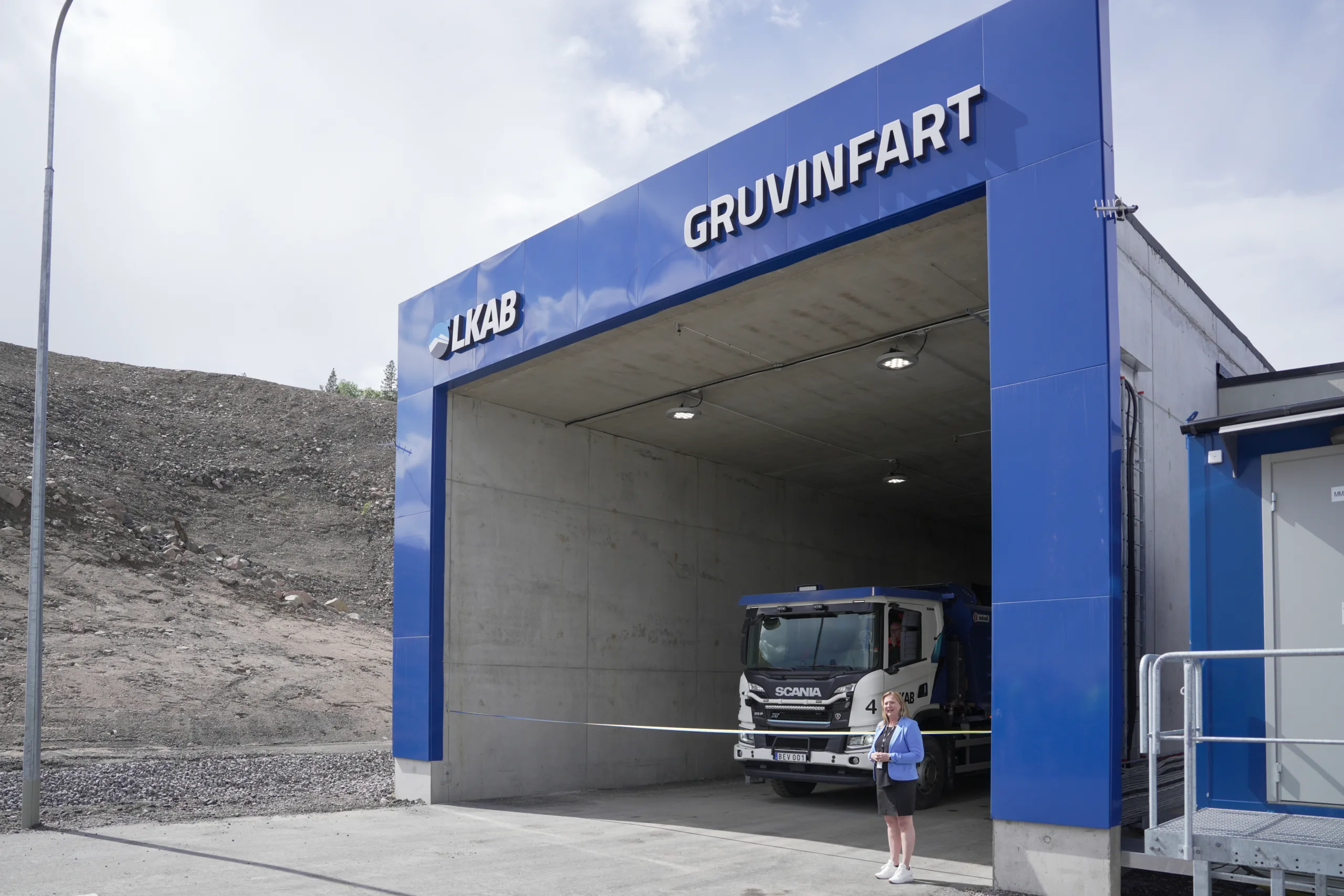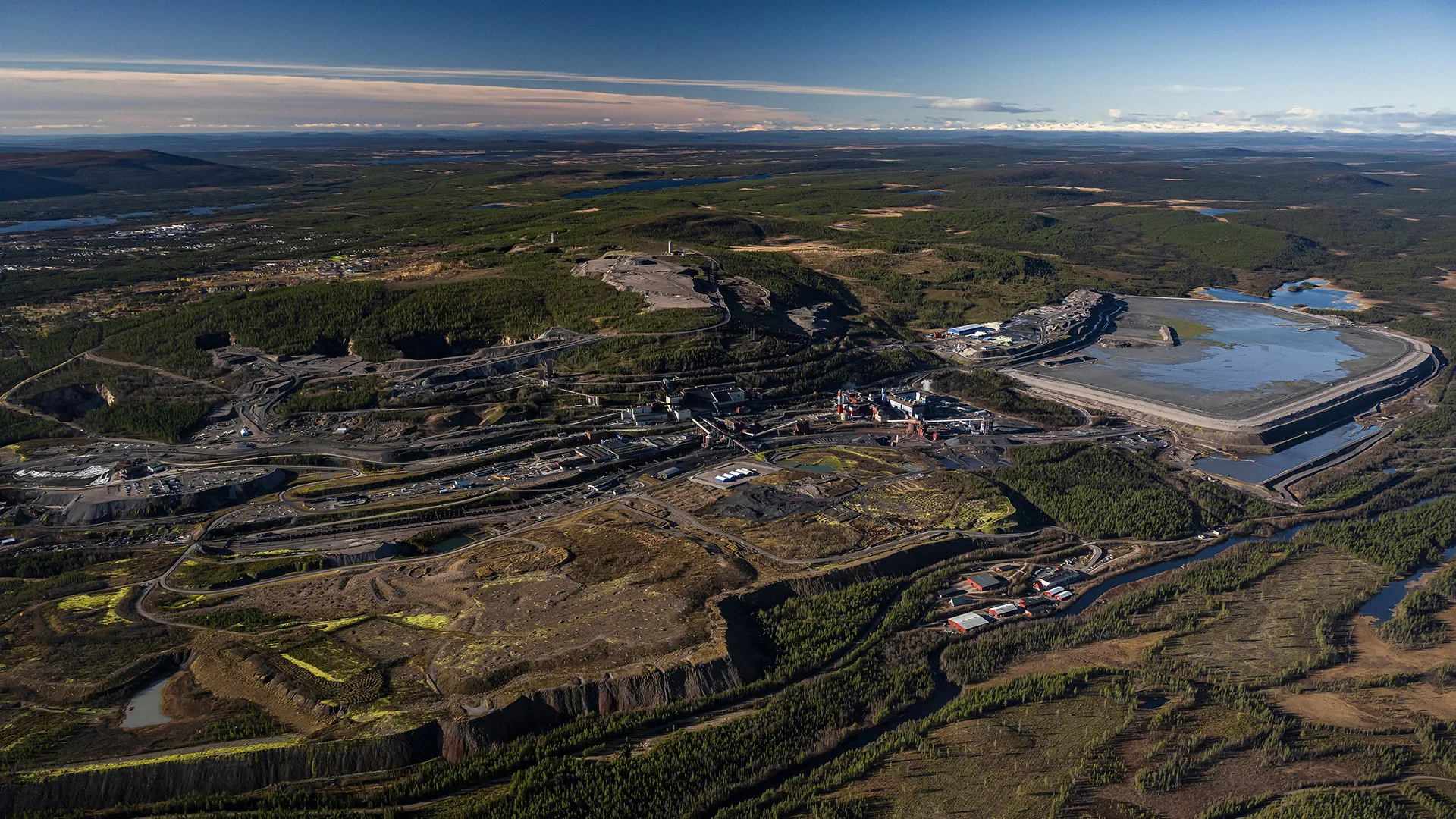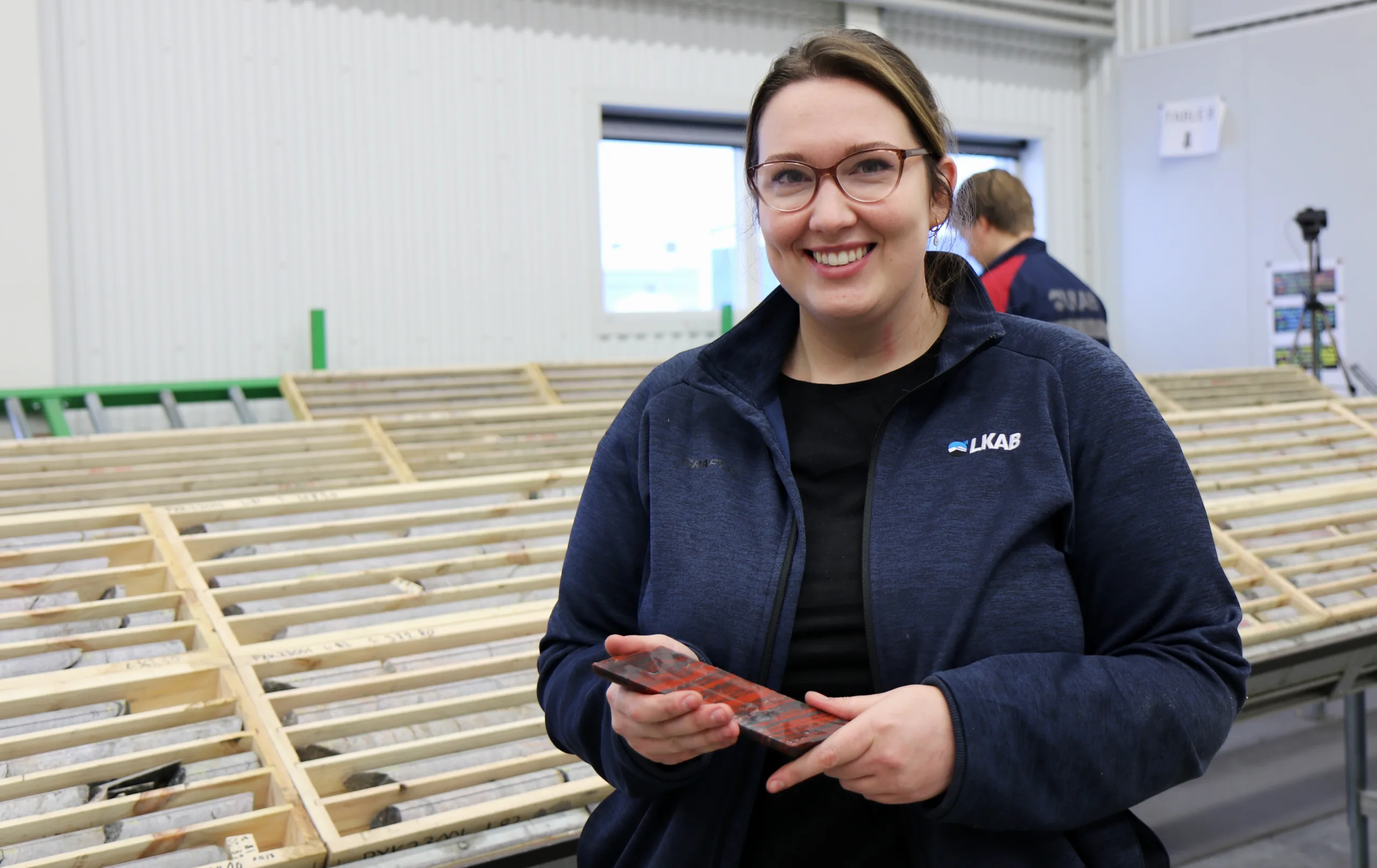LKAB increases mineral resources, reports rare earth metals

After major exploration efforts LKAB can now report a continued increase in mineral reserves and mineral resources and, for the first time, present mineral resources of rare earth metals. Compared to 2020, the reserves have increased by 10 percent and mineral resources have increased by as much as 55 percent. The Per Geijer deposit in Kiruna constitutes a major complement.
The iron ore reserves in Kiruna increase from about 700 to more than 800 million tonnes, which means that the life expectancy of the current 1365 main level is extended from 2035 to 2046. In Malmberget the reserves increase by 30 million tonnes to about 300 million tonnes, which also extends the life expectancy above the current main levels. In Svappavaara, however, the reserves in the Leveäniemi mine are decreasing due to mining, although mineral resources in Gruvberget have increased significantly after extensive exploration drilling.
“For the first time, we can present results from the so-called Per Geijer deposit, north of Kiruna. There, we have thus far identified more than 400 million tonnes of mineral resources with high iron content. For us, this means that there are good prerequisites for a long future for our Kiruna operation,” says Pierre Heeroma, Senior Vice President Exploration, Strategy and Business Development, LKAB.
To date, LKAB has identified reserves and mineral resources amounting to a total of about 4 billion tonnes in Svappavaara, Malmberget and Kiruna. Since the start in 1890, LKAB has mined a total of more than 2 billion tonnes. In addition to iron ore, LKAB’s ores contain apatite, a phosphate mineral that contains phosphorus. Phosphorus is a critical raw material for Europe and an important component in mineral fertilisers. Without the use of mineral fertilisers, world agricultural production would diminish by half.
Other critical raw materials contained in our ores are rare earth metals, which increase in relation to the content of phosphorus. The principal driver of demand for rare earth metals is the green transition, which implies an increased demand for powerful permanent magnets used in electric vehicles and wind-power turbines, which require, for example, praseodymium and neodymium. These, together with dysprosium are expected to constitute the most valuable rare earth elements for LKAB.
“For the first time, we are reporting resources of rare earth metals, in addition to phosphorus, which was also included in our report last year. The volumes are large and the contents look promising. In Malmberget we have identified 1.4 billion tonnes showing an average content of 0.58 percent phosphorus, in Kiruna an equivalent amount with an average content of 0.33 percent and in Svappavaara 800 million tonnes averaging 0.49 percent. Resources in the Per Geijer deposit amount to 400 million tonnes with an average content of as much as 2.73 percent phosphorus,” says Pierre Heeroma.
Mineral resources of rare earth metals in Kiruna are 1.4 billion tonnes with an average content of 163 ppm (grams per tonne). In Malmberget there is an equivalent volume, but the average content of rare earth metals is 227 ppm.
“The content of phosphorus and rare earth metals in our ores would not justify primary mining of these. However, thanks to our circular business model, with increased utilisation of large volumes of previously mined material, our ambition is to enable profitable production of relatively large volumes. A very exciting exception is the Per Geijer ore, which has very high phosphorus content as well as rare earth metals and thereby has potential to significantly boost our rate of production of phosphorus and rare earth metals,” explains Leif Boström, Senior Vice President, Business Area Special Products, LKAB.
“Since 2018 we have invested some 1.2 billion kronor in exploration and, in 2021 alone, we have test-drilled the equivalent of 200 kilometres. Mineral resources increased considerably during 2020 and have increased further this year and now amount to a total of nearly 2.8 billion tonnes. The objective to secure mineral resources amounting to at least 1000 Mt in Kiruna, 500 Mt in Malmberget and 250 Mt in Svappavaara has thereby been achieved, which means that we have good prerequisites for production up to 2060,” says Pierre Heeroma.
Facts about mineral resources and mineral reserves
- Deposits in which exploration has indicated occurrence and content, but for which a detailed technical and economic analysis has not yet been made, are classified as mineral resources. When such an analysis has been made the deposit can be reclassified as a mineral reserve, if it is deemed profitable to mine.
- Mineral resources and mineral reserves are the basis of a mining company’s operations and their determination requires successful and continuous exploration. LKAB reports its mineral resources and mineral reserves in accordance with the PERC 2017 reporting standard.
Facts about LKAB’s planned extraction of critical minerals
- LKAB’s ores contain the critical rare earth metals, such as phosphorus, bound in apatite. The rare earth metals always occur collectively and all are found in LKAB’s ores.
- Phosphorus is an important component in mineral fertilisers. It is estimated that half of all world agricultural production is dependent on mineral fertilisers.
- Production at LKAB’s industrial site is expected to start in 2027.
- Use of hydrogen and electrified processes means that the principal processes will be fossil-free.
- LKAB can become a significant producer of critical minerals for agriculture and green technology:
- 5 times Sweden’s requirement for phosphorus for mineral fertilisers, which can reduce Europe’s import requirement
- 30% of Europe’s demand for rare earth metals for processing
- Sweden’s entire requirement for gypsum
- Today Europe is dependent on imports of critical raw materials and minerals which are economically important, where there are risks for security of supply:
- Phosphorus mineral fertiliser that is imported may have high content of cadmium, which can cause osteoporoses.
- Europe is 90% dependent on imports of phosphorus and has only one producer. Phosphorus is imported mainly from Morocco and from Russia.
- 98 percent of the supply of rare earth metals is now imported from China.
Contact: Anders Lindberg, Group Media Relations Manager at LKAB, Tel: 46 (0)980 783 55. E-mail:anders.lindberg@lkab.com
LKAB is an international mining and minerals group that offers sustainable iron ore, minerals and special products. We are committed to developing carbon-free processes and products by 2045, leading the transformation of the iron and steel industry. Since 1890 we have developed through unique innovations and technological solutions and are driven forward by more than 4,500 employees in 12 countries. In 2020, the LKAB group had sales of about SEK 34 billion. www.lkab.com





